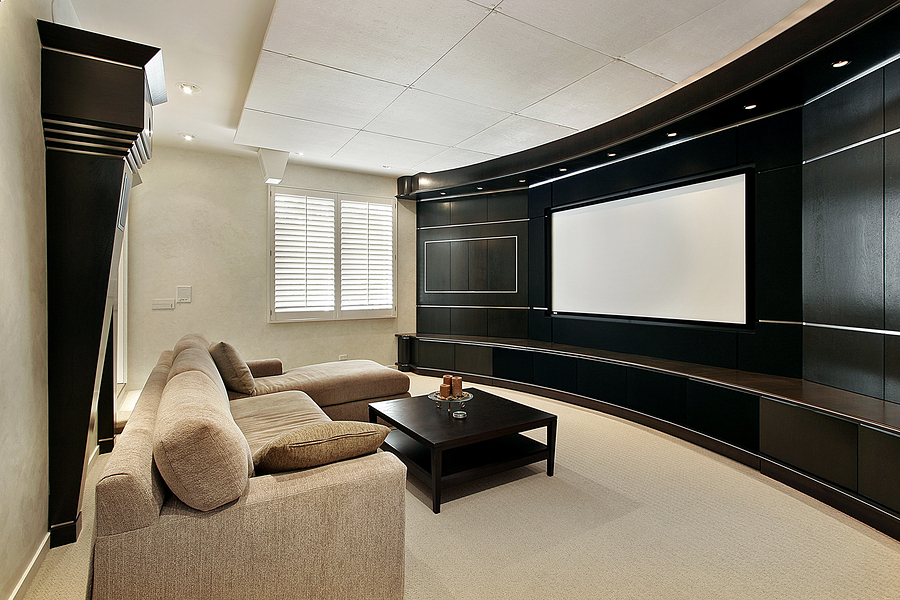With home theaters growing in popularity, one glaring issue plagues entertainment setups large and small: unsighly cables.Power, media, and television cables have turned your entertainment room into a visually unappealing area of your home that also has the potential to cause a trip and fall incident that leads to a personal injury claim.
As a frequently overlooked part of setting up and home theater room, cable management represents one of the last items on a to-do list, if there is a home theater setup to-do list at all. Unless you follow the best practices for home theater cable management, your entertainment room turns into an area of your home that looks like something straight out of a movie depicting the growing pains associated with college life.
Let’s review the best practices for home theater cable management shared with us by Selby, hi-fi entertainment experts.
It Starts with a Plan
Buying the right types of cables, as well as the proper length of each cable, goes a long way towards creating a home theater system that exudes aesthetic appeal. Before you purchase the first electronic component, you should spend the time required to devise a home theater system. This means deciding where to place every component of the entertainment system, as well as adding helpful electronic components such as one or more power surge protectors for each wall where you need electricity to power your home theater system.
A power strip surge protector should attach to enough outlets to handle the energy demands required to provide ample electricity for every electronic component.
Every Cable Has a Purpose
After every component of your new home theater system arrives, your soon-to-be entertainment room looks like a set of a Hollywood movie lot long before the first day of production. You know where to place the electronic components, but you have lost track concerning where to install each cable. It can be easy to forget the purpose of each cable when setting up a home theater system. Hooking up the wrong cable to the wrong electronic component is not only frustrating, but it can also be dangerous as well.
Buy a set of inexpensive, color-coded labels to help you differentiate the purpose behind every home theater cable.
Cable Management 101
If you plan to mount your new high-definition television on a wall in the entertainment room, you need 90-degree HDMI couplers for every media device to decrease the stress of bending the HDMI cables. Preventing bend stress dramatically improves the performance of HDMI cables. Running the cables powering your home theater system through the back of the high-definition television is a highly effective method for keeping the cables out of sight, out of mind.
You also have the option to conceal cables by running them through the nearest wall. All you have to do is create the right size hole and install brackets to hold the cables firm along the wall that is the closest to your new home theater system. You also can use pass-through grommets to stabilize longer HDMI cables.
Take Advantage of the Component Rack
Placing most of the electronic components, such as the receiver, amplifier, and Blu-ray player, on a component rack frees up space in an entertainment room for the addition of other amenities. It also provides you with a location to run most, if not all of the wires and cables to one area of your entertainment room. Simply use zip or wire ties to bundle the home theater cables together, but make sure not to bunch them too tight to prevent damaging the insulation that protects each wire and cable.
You should consider tying the AV and power cables separately to decrease the amount of electromagnetic interference. Then, add adhesive pads or clamps to create a cleaner appearance for your new home theater system.
Cut the Cable Cord
One of the fastest-growing trends for cable management involves eliminating the use of wires and cables to power a home theater system. Instead of connecting an assortment of cables to a new home theater system, turn to an HDMI port that powers a streaming device such as Roku Stick. This strategy has caught on in the United States, with an estimated 22 million Americans literally cutting the cable cord to install a home theater system.
The Bottom Line
Setting up a home theater system is rewarding because you create a room in your home that increases in value, as well as keeps you entertained day after day. However, failing to take control of the wires and cables can leave you with an unsightly mess that diminishes the appeal of a home theater system. Follow one or more of the tips for the best cable management practice and you should create a high-powered entertainment room.
Another tip you should consider is to eliminate every wire and cable by going wireless.
